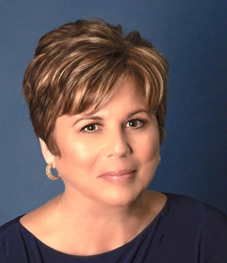Competencies, Capabilities and Skills: An Example for Organizational Success
Last week, we published a brief article called, “Competencies, Capabilities, and Skills: Every Leader’s Guide to Their Evolving Use.” In it, we said:
It is important for every leader to understand that these three concepts are related and intertwined and you can integrate the best of them to build the kind of talent needed in your organization. If the competency framework you have in place is not working, then improve it. Change the language. Simplify the messages. Reference capabilities and skills more prominently. Make the framework and its components do their job for your organization, which means starting with the business outcomes you need from any framework or taxonomy.
It is not difficult to evolve your competency/capability frameworks and skill taxonomies, but it does take a certain experience and skillset to do it well and efficiently. It does take a vision for how all of the pieces can work together for the right outcomes, and how you can tackle every phase of the employee life cycle with the focus you need, and that employees deserve.”
This week, we want to provide an example of how one organization might approach using and integrating its competency framework, capabilities framework, and skills taxonomies. This example starts with the competency framework.
Competency Framework
This organization was using eight competencies in its performance management process for several years. That is the only place the competencies were really being used, and even in the performance management process, not being used well at all. It had tried to do more to evolve the competencies and to embed them in their processes as time went by, but again not very successfully. Leaders at higher levels throughout the organization did not receive the idea of “competencies” or “competency frameworks” very well, scoffing at the concept whenever anyone, usually someone in HR, tried to discuss how the organization could benefit from strong and consistent use of such a framework.
At the time, the organization was also trying to change its business model from an organization offering financial services to credit unions only to an organization offering financial technology services and products to credit unions and banking institutions. Its customers were changing. Customer expectations were changing. The organization was entering the financial technology industry with minimal history or strength in the arena. Leaders had operated in a certain fashion for decades, and now they had to learn new ways of operating and align these new ways of operating and behaving across the organization.
It was just the right time for the organization to take its eight competencies, barely and inconsistently used, and evolve them in order to facilitate the development and alignment of its workforce. A competency framework can do this for an organization. Ideally, it identifies the most critical competencies (knowledge, skills, abilities, and other characteristics) for the organization. Often, these competencies will be labeled and defined slightly differently for the various levels in the organization.
Many competency frameworks begin with identifying broader factors that are important to organizational success and workforce development. Many of these frameworks organize their competencies into some variation of the following factors: Personal Leadership, People Leadership, Results Leadership, and Thought Leadership. The terms used should resonate for the specific organization in question and can vary from these factors in ways that make sense for the organization. The organization identifies the key competencies for each factor that are particularly important to the specific organization and again uses a language that resonates with the organization (making links to vision, values, strategies, etc.). The overarching competency framework developed is meant to be general enough so that it is easily used and useful, but specific enough to have the “feel” of the specific organization.
This framework can then be integrated into how the organization selects employees, manages performance and succession, and develops its workforce. The organization being discussed here could capture its general competency framework. It is not meant to be perfect, but rather to illustrate a few key points.

For this organization, there are two factors that are important to highlight because the organization has very specific needs related to them. Having a competency factor titled something like “Industry Leadership”, and linked to innovation, is important. They are trying to transform their business, after all, and make strides into the financial technology arena. It is also important to have a competency factor titled something like “Results Leadership” because the organization had continued to struggle with concepts of accountability and drive. Linking this factor to the ideas of “Govern and Serve” helps to clarify that the organization is governing its own results, but that it has a huge customer service component that must be incorporated into this framework as well.
The competencies that represent each factor might look something like the following for this organization:

Each competency identified in this framework has some specific relevance or history for this organization. For example, “Innovation and Strategic Thinking” is identified to capture the clear need for people to develop innovative, creative, and strategic thinking skills, extending into technology solutions. The organization has a huge customer call center presence, but ongoing challenges in understanding and serving its customers. So, a competency called something like “Customer Focus” is critical. It can be defined differently by level, of course, but can also include current ideas such as customer experience and design thinking. The organization is also very focused on how it is going to realize the changes needed to succeed in its new world so a competency linked to “Change Management” also helps describe the needs of the organization.
This example competency framework (again, with competencies defined slightly differently by level) is not cumbersome to manage for an organization. Leaders and employees get used to thinking about the four categories important to the company: Industry Leadership, Results Leadership, People Leadership, and Self Leadership. It is fairly straightforward for leaders to discuss these categories in succession meetings or performance reviews, for example.
As noted, such competency frameworks are ideal for aligning an organization and all of its employees and leaders, and for developing a workforce with a certain type of profile. The next section discusses how this organization might consider the topic of capabilities.
Capabilities
Capabilities and capability academies are gaining more attention and traction related to workforce development today. In some ways, these ideas are supplanting the concept of competency frameworks (we hope we show how to make the best use out of the related concepts).
When organizations talk about building capabilities and having capability academies today, they are often focused on building very specific capabilities, such as digital capabilities, and functionally-specific capabilities, such as HR capabilities.
In the case of the organization we have been discussing, there are several capabilities that clearly could be targeted, including:
- Enterprise Technology Capability (e.g., Digital Capability, Financial Technology Capability)
- Customer Service & Experience Capability
- Functional Capability (e.g., Sales & Marketing, Human Resources)
This organization could greatly benefit from this type of focus. It could establish career paths related to technology leadership, customer service leadership, and functional leadership. It could build “academies” related to these areas, mapping online learning content and various courses and programs to them. Employees with specific aspirations in one of these areas have a clear line of sight of how to develop in the area. Leaders and organizations have multiple ways to engage employees in longer-term careers with the company.
There is a good deal of research that already exists to help organizations identify important capabilities. For example, related to HR capabilities, Josh Bersin has identified nineteen HR capabilities including, for example, Benefits and Wellbeing, Diversity and Inclusion, Labor Relations, and People Analytics (Accelerating_Capabilities_HR_v3.pdf (joshbersin.com)). Each of these capabilities is also linked to more specific skills, in a resulting skills taxonomy for HR.
Skills Taxonomies
As noted in our previous article, the use of skills taxonomies is becoming more popular for a few reasons. One, technology solutions have used skills to organize their processes. For example, career development software may allow for searching for opportunities to use and build particular skills. Two, in a world where digital skills are important for every organization, it is easy to identify, list, and build all the particular digital skills that the organization might need. Third, in a world where people are engaged in gig work and have several careers at any one time, they can search for and apply for work that targets the use of particular skills. Organizations, of course, can search for and find both candidates and employees with these particular skills.
In the example organization we have been discussing, listings of critical skills needed by the organization to build both enterprise technology capability and customer service and experience capability are good places to start. For example, lists of particular digital skills the organization needs to build and/or buy are important. This might include skills related to blockchain development; programming languages; Application Programming Interface (API) development; machine learning, artificial intelligence, and deep learning; and cybersecurity, among many others.
Once lists of key skills are identified, ways of building these skills are also identified. Today, there are so many online sources that allow people to build these specific skills on their own timetables. Organizations will also clearly map the learning opportunities on their internal platforms to particular skills and supplement this with more in-depth learning opportunities as needed (e.g., stretch assignments, project management opportunities).
Summary
General competency frameworks that guide the building and alignment of a company’s talent should not be summarily discarded in the zest to move on to the new best thing. Companies need to continue to consider how best to use them and align them with capabilities and skills taxonomies. This article offered a brief explanation and example of how this is achieved.



